

HIGH FIDELITY PERSONAL AUDIO & STEREO MAGAZINE



HIGH FIDELITY PERSONAL AUDIO & STEREO MAGAZINE

CFA3 SS-ZF
HEADPHONE AMPLIFIER


ABYSS
AB1266 PHI TC
HEADPHONES
ART AUDIO
CABLE LOOM
FULL CABLE SET


AUDIONET
WATT
INTEGRATED AND MORE…






E LECTRIFIED S TABILIZATION P LATFORM The Last Platform You’ll Ever Need


Music is art, art is music.











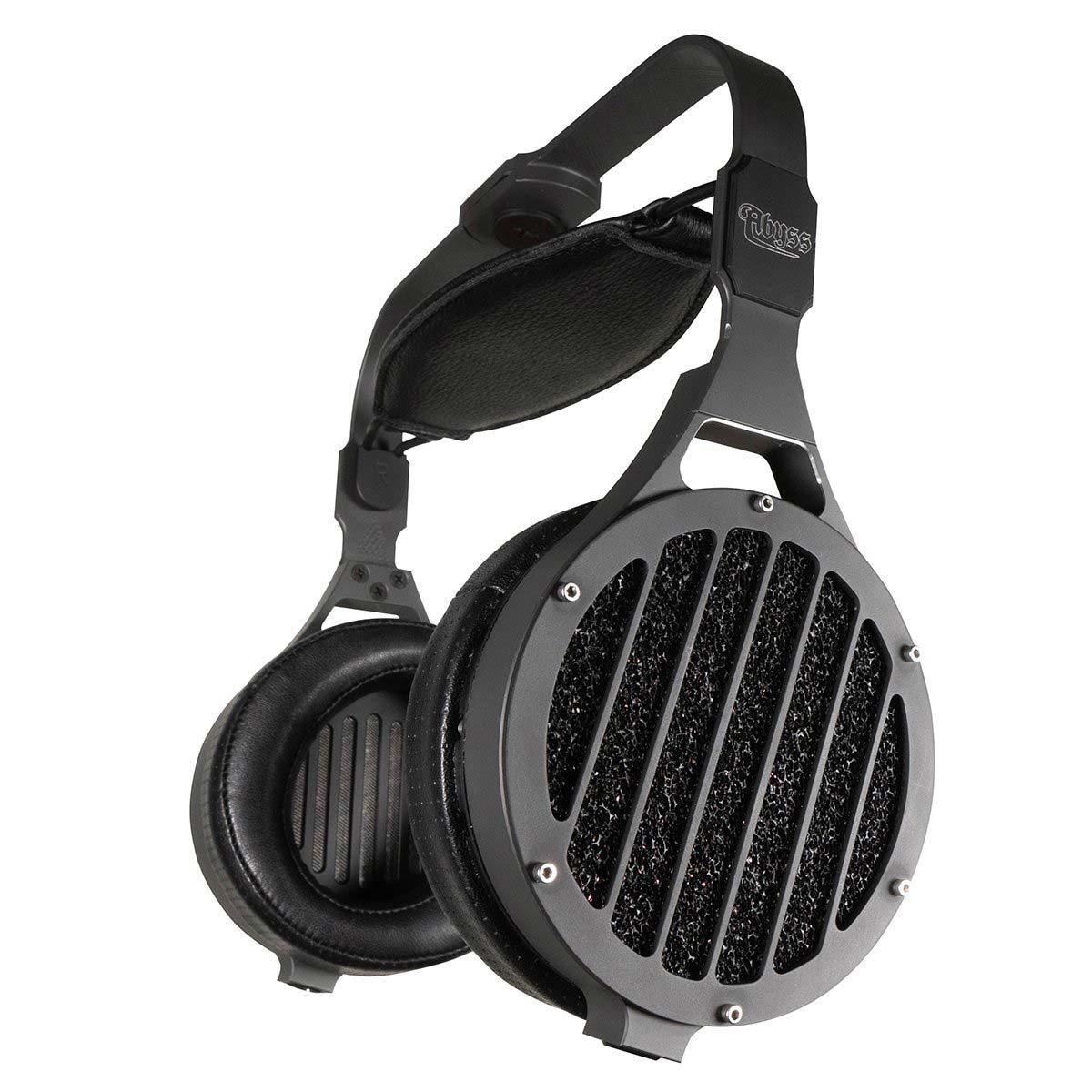



EDITOR'S
GRIMM AUDIO SQM CABLES
GRACE NOTES - JULY: JAZZ TIME!
HEADAMP CFA3 HEADPHONE AMPLIFIER
ABYSS AB1266 PHI TC HEADPHONES
MOJO AUDIO MYSTIQUE Y USB DAC
AUDIONET WATT INTEGRATED AMPLIFIER


REVIEWS ON OUR WEBSITE

Front Inside Cover: Vincent Van Gogh - Sunflowers
Back Inside Cover: Tamara De Lempick - Lys et roses jaunes,1949
The Other Art. It is my belief that the artist and the musician are not only creatives, but they access heart and soul and experience, perhaps, in the selfsame ways. My own love for art and music are inseparable. And so art, music, and those things which facilitate the music, shall share theses pages.
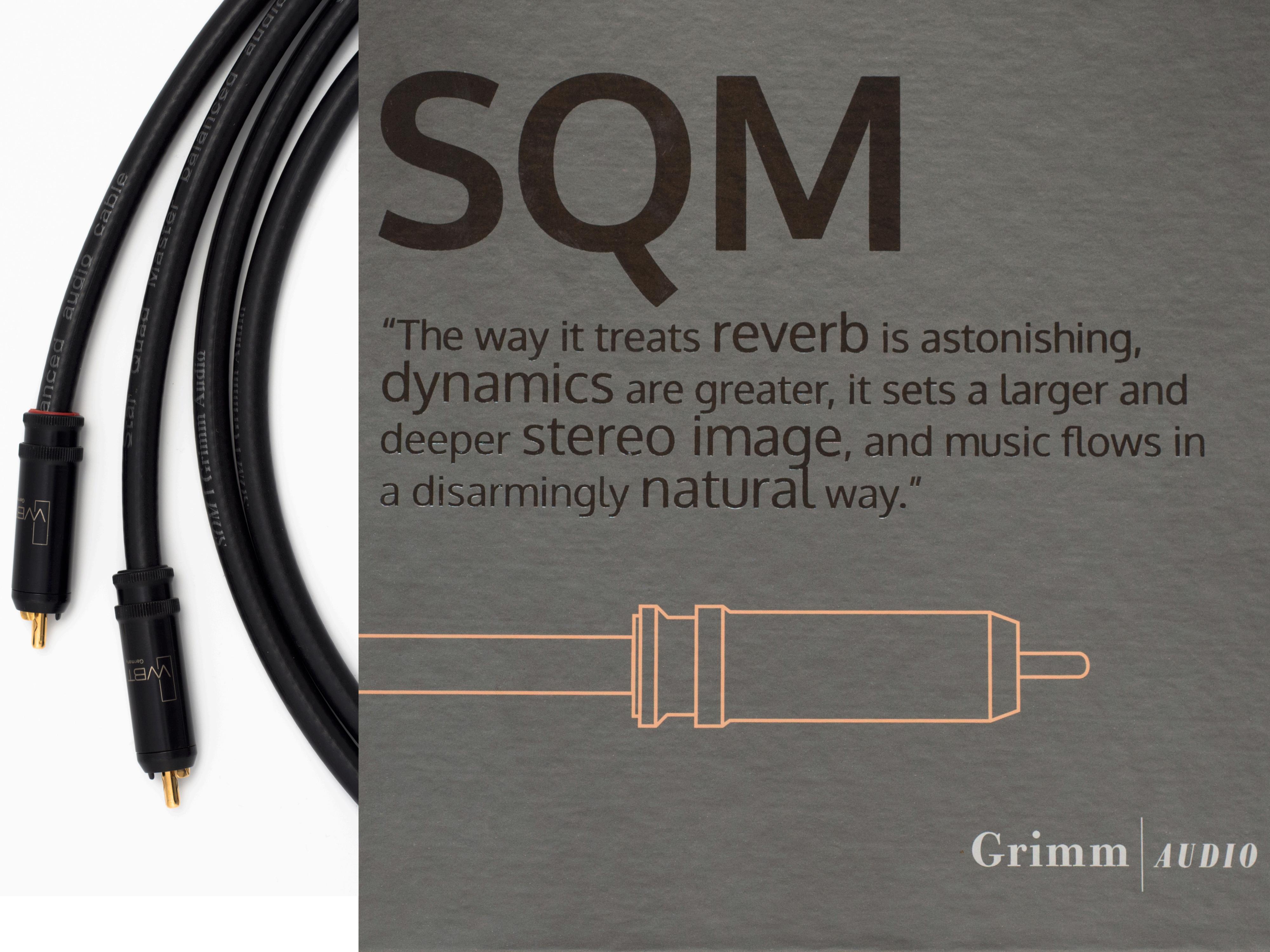



“ The Kubala-Sosna Emotion interconnects connected me to the music like no other interconnects I've heard, at anywhere near the price.
Robert H. Levi
Positive Feedback Online

The Expressions present music without noticeable boundaries to a stage; sound stages don't erupt from a black background, but from an invisible and expanding one…
Larry Cox
Positive Feedback Online


It is probably obvious that music and art are two of the things I most love and enjoy. There’s not a single issue of this AudioKeyREVIEWS Magazine that does not speak to music and art. I have a curated collection of over 1,100 pieces of digital art that I can place, rotate, or invite for another “season” of art and music whenever I wish. There are few museums that can boast as many pieces of art from the great masters. Being able to use them to bring art to my readers’ experience and discovery is truly enjoyable. And for this I am grateful.
I have also collected many albums from many different genres that have truly become part of me over the decades, after getting me through high school (and family) and then college and far too many all-night study sessions. And then there is life, of course, or as some notable artists might say, “The vicissitudes of life.” There have certainly been many of those, and they continue.
In this July issue, art and music have come together yet again to help me and our reviewers flesh out some rather spectacular components, encompassing amplifiers, DACs, cables, headphone amplifiers, and a number of other components. Discovering them has been both refreshing and impactful, an exciting revelation that again stands beside truly impeccable works or art. Perhaps you’ll make the connection.
I do hope that you enjoy the latest issue of AudioKeyREVIEWS Magazine, presented for your collective enjoyment.
Sincerely,
K.E. Heartsong Editor-in-Chief


Publisher/Editor-in-Chief
K. E. Heartsong
Managing Editor
Kathe Lieber
Senior Editor(s)
Andre Marc
Gérard Rejskind - RIP
Reviewer
Oliver Masciarotte
Andre Marc
Columnists
Kathe Lieber
Gérard Rejskind
audiokeyreviewsCA.com















By K.E. Heartsong

Ihave gone on in some detail regarding those who assume an almost ideological belief in the fact that “there is no difference in the sound of cables, any cables.” And I have heard noted audio manufacturers echo or believe this very same statement. I must admit that the latter revelation was indeed both perplexing and shocking. How

could someone in the audio industry, some one who sets about building components with their various microchips, resistors, capacitors, power sources, differing wires, etc., not know? I have pondered long and hard on this, and have arrived at two conclusions.
The first conclusion is that the believer/ proselytizer who “knows” that cables don’t make a difference has never actually undertaken the empirical research to validate their “hypothesis.” The second is that their hearing and ability to differentiate macro— large-scale changes in sound—let alone micro—small changes in sound—have long ago abandoned them, if indeed they were ever in possession of such abilities.
The second conclusion took considerably more thought as to how someone steeped in the audio industry, in many cases for decades,




would not know that cables absolutely make a difference. Is this a belief system so rigid as to vehemently discard any new information, even their own insights and observations? Or is it that their hearing ability has long ago abandoned them, analogous to a deaf Beethoven or, more tangentially, a Monet with diminishing eyesight?
In truth, this is a topic that boggles the mind. Especially so when I can perform a comparison with a teenaged girl and two power cords—a standard power cord and, say, Paul Spetlz’s AntiCable Level 3 power cord —and she gets the difference, literally in
seconds! She has no buy-in, is not an audiophile, and has embraced no dogma, yet she gets it clearly.
Over time, I have evaluated and reviewed a number of cable products, ranging from entry level cables and cable looms to reference level cables and cable looms. And I have a bet for anyone whose hearing remains intact that differences do exist between cables, and in many if not most cases, those differences can easily be discerned (see power cable example above).
This brings me to my current cable review, Grimm Audio’s SQM cables, which have proved decisively that technological


advancement proceeds at a rather frightening pace, that the applied science has decidedly homed in on cable design, and that the least expensive cables are now competing easily with some of the most expensive cables (see SQM cables). Well, how do those SQM cables sound, and which expensive cables have they “soundly” defeated? In the end, this may be a far shorter review than intended, and the reason will become quite clear.
REFRAIN: Unlike most reviews, this review will be non-sequential, as it will start with how the equipment actually sounds and not the process of physically “undressing” it and/ or laying out its various accoutrement, specifications, etc. Think of this review then, as a non-linear movie—Memento, Kill Bill, Pulp Fiction, Eternal Sunshine of the Spotless Mind, The Queen’s Gambit, In the Shadow of the Moon, etc.—that likewise starts at the end and winds its way to the beginning.
The Grimm Audio SQM cables were reviewed in the context of two audio systems — the reference two-channel and the reference headphone, both systems detailed below.
I received SQM interconnect cables only —two balanced sets and two single-ended sets (itemized below). So while not a full cable loom, the cables would be placed to give
a full accounting compared to the cables that had been removed.
• Grimm Audio SQM XLR Interconnects (1-1.5m, 1-2.0m)
• Grimm Audio SQM Single-Ended Interconnect (1-1.5m, 1-2.0m)
As in all cable reviews, I kept things simple in terms of the streams that would be used for evaluation—all streams very well known to me. The tracks utilized were:
• Dave Brubeck’s “Take Five” (Time Out, Columbia)
• Ólafur Arnalds “Árbakkinn,” (Island Songs, ECM)
• Eiji Oue’s Stravinsky (Reference Recordings)
• Vangelis’ Blade Runner Soundtrack (East West UK), and
• Joan Shelley’s eponymous album (No Quarter)
THE REFERENCE SYSTEMHEADPHONE
• Grimm Audio MU1 Streamer
• Silent Angel Rhein Z1 Streamer
• Silent Angel Forester F2 Power Supply
• Silent Angel Bonn NX Network Switch
• Silent Angel Genesis GX Clock
• Bricasti Design M1 Special Edition DAC
• Border Patrol SE-1 DAC
• Aurorasound HEADA Headphone Amplifier
• HeadAmp CFA3 Headphone Amplifier
• Pass Labs HPA-1 Headphone Amplifier
• HIFIMAN Susvara Headphones
• ABYSS AB1266 Phi TC Headphones
• Meze Empyrean Headphones


• Audience FrontRow Interconnects (XLR, RCA), USB, Ethernet
• Kubala-Sosna Interconnects (XLR, RCA), Power cords
• Grimm Audio SQM Interconnects (XLR, RCA)
• RSX BEYOND, MAX Power Cords
• TORUS AUDIO AVR ELITE Power Conditioner
THE REFERENCE SYSTEM - TWOCHANNEL
• Grimm Audio MU2 Streamer/DAC/ Preamplifier
• AIR-TIGHT ATC - 5s Preamplifier
• AIR-TIGHT ATM - 1E Amplifier
• ATMA-SPHERE - GEM Integrated
• LYRIC Ti 100 MkII Single-Ended Integrated
• Franco Serblin Accordo Essence Speakers
• Fern & Roby Raven III Speakers
• Kubala-Sosna Interconnects (XLR, RCA), Speaker Cables, Power Cords
• Grimm Audio SQM Interconnects (XLR, RCA)
• TORUS AUDIO Power Conditioner
• RSX BEYOND, MAX Power Cords
• SEISMION Amplifier Stand (powered)
The Grimm Audio SQM cables would be reviewed via a top-to-bottom “soundoff’”versus various cables that were in-house and those that had just come in to be reviewed. Or at least that’s the way I had intended things to proceed, but the wholly unexpected abilities of the SQM balanced and single-ended interconnects would in fact rewrite the script entirely again, making for a short review.
Placing the SQM XLR balanced cables in the Reference Headphone system, absent the
benefit of complete burn-in, was nonetheless an eye-opening, mouth-agape epiphany. All the cables that were not considered reference or Top-of-the-Line (TOTL) cables in a manufacturer’s offering were quickly and soundly surpassed in all technical, musical, and immersive abilities. It was not even close, and this called for several minutes of quiet to determine what had just happened. After reflection, I pressed on to determine whether or not this had been an anomaly, a one-off, or perhaps a mistake on my part. The initial observations held firm. The Grimm Audio SQM balanced interconnect was the strongest cable in every respect, as it made the other cables sound deficient and lacking in technical acumen and refinement. Whoa!
The various cables prior to the SQM had been either at the top of their respective price range or they represented the TOTL of their respective manufacturers.
When it came to the TOTL cables, well, at least the penultimate—second or third from the top or ultimate—while they were not dispatched in the selfsame way as the other cables, there were clear differences in technical abilities, presentation of space, at any given venue, musicality, and quiet. The SQM had again come out on top against cables five to six times its suggested retail price—$710/pair (2.0m XLR)! And against the ultimate TOTL cables at seven to eight times the SQM cable’s pricing, the SQM


were either matched across all parameters while providing a more natural presentation, or they excelled in certain other areas— spatial representation—soundstage width, depth, separation, and layering, slightly above the TOTL cables. And this was a rather shocking revelation, given the extreme pricing differences between the TOTL and Grimm Audio SQM cables. They only inhouse cables that handily weathered the storm of the SQM cables were KubalaSosna’s top interconnect cables.
I had had an epiphany decades ago, when a friend introduced me to what was a rather obscure cable that he believed would best the cables that were currently in my system. I asked what those cables cost and he gave me a very low number. I scoffed and remember saying something like, “Do you know how much these cables cost? There’s no way.” He laughed, gave me the cables, and were far better than the expensive cables in my system.
“But how do the SQM cables actually sound?” you ask. Well, the short answer is that they sound very much like the TOTL cables that I have written about across these pages, though at relatively speaking bargain basement prices. There is, however, the added quiet, a quite profound naturalness, and the meticulous staging of your music, that “sorts” out musicians in and across a given venue to its depths, width, and their relative spacing that few cables have achieved. The other descriptors relative to the SQM are its rendering of tone/timbre, which is more in line with a box of 120 crayons as opposed to the standard 24 or 96 crayons. This, of course, extends expressiveness and, in turn, a naturalness, an immersion into one’s music that is rather compelling. And the fine—read smaller—diameter of the SQM relative to



SQM is substantive, deep, tight, wellresolved, clear, and beautifully textured.
On Dave Brubeck’s “Take Five,” Joe Morello’s cymbals were superbly resolved and perhaps more natural than I have ever heard them. The birds on Ólafur Arnalds’
know. What I do know is that when I discovered the actual pricing of the SQM cables, I was truly and profoundly shocked. How could it be that these cables at mid-fi level pricing were performing so excellently and at TOTL level pricing? Grimm’s

The current epiphany of epiphanies? Yes, and for a very interesting reason. When I received the SQM cables, I was not aware of their pricing and would not be made aware of their cost until the review was near its conclusion. Whether this was intentional, to avoid biasing my opinion, or a direct result of Grimm Audio being incredibly busy—shows, Grimm Audio MU2 debut, etc.—I don’t
sound quality is a serious step up from Grimm’s already excellent TPR cable. The way it treats reverb is astonishing, dynamics are greater, it sets a larger and deeper stereo image, and music flows in a disarmingly natural way.”
I do not believe that a company’s design philosophy and subsequent marketing slogan


have ever been borne out so accurately as with the Grimm Audio SQM cables.
Yes, the Grimm Audio SQM cables are mind-boggling, as they compete, no scratch that, out-compete Top-of-the-Line (TOTL) cables at many multiples of their cost in a way that defies any semblance of, well, “logic.”
One would not think this possible, given the vast disparity of cost between them and the TOTL competitors, but on every metric of music reproduction—technical/spatial, natural musicality, immersiveness—the SQMs were consistently on top. Incredible!
I have written in the past of coming across a compelling product that pushed the boundaries or the wherewithal of a given audio segment—HIFIMAN Susvara, Mola Mola Tambaqui, Grimm Audio MU2, SEISMION REACTIO 51, etc.—but their realm was always at TOTL designation in terms of relative cost. The SQM, per its pricing, is far from that designation, but it performs as though it is, and comfortably so.
This is perhaps one of the easiest and highest recommendations that I have made for a product, and given its costs and its abilities, at orders of magnitude above its cost. The Grimm Audio SQM cables are clearly and easily DIAMOND AWARD winners of the first degree and truth be told, they are BREAKTHROUGH winners as well. And as I say with most components and cables of
such abilities, you will see them again in our Awards Issue, where they will no doubt bag a few more well-deserved awards.
Pros: Exceptional in their ability to supplant cables at many multiples of their price, while providing exceptional levels of performance when it comes to rendering music in technical/spatial, natural, and immersively engaging ways. Cables are indeed incredibly important to the fidelity of one’s music.
Cons: None.
GRIMMAUDIO BV
SQM RCA (1.0m/2.0m): $670/$765
SQM XLR (1.0m/2.0m): $615/$710
Zandven 6
5508 RN Veldhoven
The Netherlands info@grimmaudio.com
Or call: +31 40 213 1562
AKRM







By Kathe Lieber
We emerge from the metro station, blinking in the bright sunlight. It’s a perfect day— temp in the low 20s, a light breeze. We’ve come on the early side so we can snag a table at the stage-side bistro. Success!
A glass of rosé with the cheese plate, please…. Later, we yield our table to a waiting family and meander from stage to stage, taking in the free shows. There’s no better way to spend a summer evening. Across the country, Canadians are feeling the vibe. My local jazz fest is the biggie, the Festival International de Jazz de Montréal (“Wow, what a festival!” says The New York Times), but it’s just one in a string of such events across Canada, from Halifax to Victoria. The umbrella organization Jazz Festivals Canada (JFC) counts 20 jazz fests, and they should know. Top artists and up-and-comers alike love the Canadian music scene, often travelling from fest to fest to perform. And on the audience side, there are always some dedicated groupies who take in more than

one fest, following their favourite performers. Most festivals feature a congenial mix of paid concert-hall events and free casual events onsite.
My motto is: go for the headliners, stay for the emerging artists. I will never stop listening to Brubeck and Miles Davis and Cleo Laine, but, well, there will be no more albums from them, and what about their contemporary descendants? What about all the artists who’ve put their own spin on classic jazz? The boundaries have definitely blurred (to the disgust of some purists), but with an open mind and open ears, the free flow approach to jazz can be a real revelation. Blues, soul, bebop, improv, Dixie, modal, ska…what’s not to love?
In case you’re reading this post-jazz fest season, when your local event is past, a suggestion: check out the artists you missed and make up your own personal playlist to enjoy, preferably with a chilled libation close to hand. Read on for a quick visit to several of the festivals across the country, and some names of artists whose music you’ll want to discover.


Chances are you’ve seen the official mascot of the Montreal Jazz Fest: the proverbial “cool cat”—the breed is blue Chartreux, to be precise. (I’ve worn several T-shirts featuring the cat to holey relics—guess it’s time to get a new one.) He (she?) is emblazoned on all sorts of merch that’s highly coveted by festival fans.
This year, the grand-père of Canadian jazz festivals runs from June 28 to July 6. It’s the 44th edition, featuring more than 350 concerts—two-thirds of them free. Big names include Norah Jones, Laufey, Pink Martini, Dominique Fils-Aimé (her infectious song “Joy Like a River” is on repeat chez moi), Kid Koala, Kenny Garrett, Yaya Bey…you get the picture—a mix of jazz royalty and up-and-coming courtiers.
The opening event of the first edition, in 1980, was a concert by Ray Charles at the Expo Theatre on the old Expo site, with tickets priced at an exorbitant $7. A free outdoor concert by Pat Metheny in 1989 attracted more than 100,000 people. (Metheny famously described it as “the scariest night in my life.”) The festival venue shifted several times before settling in its current location, around the Place des Arts metro station.
The Sasktel Saskatchewan Jazz Festival, in Saskatoon, runs from July 4 to 13, with lots of free programming alongside ticketed events. Headliners include Melissa Etheridge, Lorraine Klaasen, Arturo Sandoval, Shakey Graves, and Frazey Ford.
Free events take place in Victoria Park and at the Alt Hotel, with a pop-up series in various locations around the city.
Down east in Nova Scotia, the TD Halifax Jazz Festival runs at various venues around the area from July 9 to 14. On the main stage, you can see the amazing Emmylou Harris (I’m listening to “Goodnight Old World” as I write), Matt Andersen (I like his cover of “Ain’t No Sunshine”), Jill Barber, and Charlotte Day Wilson.
The Kaslo Jazz Etc Festival in the Kootenay Mountains of British Columbia, set against what’s been described as a “breathtaking backdrop of mountains and sky,” has been around for 31 years. This year’s edition runs from August 2 to 4. The event is all outdoors, with a laid-back vibe. Performers include The Cat Empire, Moontricks, The Wooten Brothers, Leila Neverland, and Trevor Hall.
While the TD Toronto Jazz festival was in June, Toronto-area jazz aficionados can look forward to the TD Markham Jazz Festival from August 16 to 18. Multiple outdoor stages will be set up on Main Street in Unionville for 30-plus performances—all free. Headliners include Elizabeth Shepherd, Queen Kong, Mira Choquette, Suzie Vinnick, and Monoka Arabic Jazz.
Looking ahead to the fall, the Harvest Jazz & Blues Festival in Fredericton, New Brunswick, will run from September 10 to 15. Among the top talents invading dozens of stages set up in the historic downtown area: Feist, Broken Social Scene, the Jim
Cuddy Band, Sarah Harmer, Maggie Rose, and Half Moon Run.
Several wineries in the Niagara region hold vineyard concerts combined with wine-tasting (how perfect is that?). The International Cool Climate Chardonnay Celebration, for instance, is slated for July 18 to 21. While you’re in NOTL, as the locals call it, don’t forget to book tickets for at least one performance at the Shaw Festival—I’ve heard raves about the current production of My Fair Lady. (The playbill also includes the Secret Garden and Candida, plus an update of A Christmas Carol.) The Niagara jazz website needs updating, but info will be easy to come by once you’re in this tourist town.
Several of the big events, notably the festivals in downtown Toronto, Vancouver, and Victoria, wrapped up in late June. A modest suggestion, however: make a mental note of next year’s dates and consider planning your summer vacation accordingly. Round up some jazz-loving friends and make a road trip out of it—a jazzy caravan, if you will.
In the meantime, head for your music pusher…er, purveyor of choice and listen to some of the artists mentioned above and on the various websites. There—your summer playlist is all set. Sittin’ on the dock of the bay…. Cheers!
JAZZ LINKS
• TD Winnipeg Int'l Jazz Festival
• JazzFest Regina
• Medicine Hat Jazz Fest
• TD Niagara Jazz Festival
• Ottawa Int'l Jazz Festival
• TD Edmonton Int'l Jazz Festival
• Lethbridge Jazz & Blues Festival
• TD Victoria Int'l Jazz Fest
• SaskTel Saskatchewan Jazz Festival
• festivalquebecjazzenjuin.com
• Vancouver Int'l Jazz Festival
• Festival Int'l de Jazz de Montreal
• TD Toronto Jazz Festival
• TD Halifax Jazz Festival
• Kaslo Jazz Festival
• Jazz Sudbury Festival
• Harvest Jazz & Blues Festival
• Yardbird Festival of Canadian Jazz
• Jazz YYC
• TD Markham Jazz Festival

Note: Not all the jazz festival websites are up to date, so Google is your friend.





By K. E. Heartsong


Imagine for a moment a weightlifter who is able to easily “clean and jerk” 500 pounds (murder on the knees). Imagine further that this very same weightlifter only ever enters contests where the maximum amount to “clean and jerk” is 250 pounds. This would, of course, provide a decided advantage and much “headroom” for this weightlifter against those for whom 250 pounds would be the maximum. Even those in a 350-pound “clean and jerk” competition would be at a disadvantage compared to the 500-pound “clean and jerk” weightlifter.
Well, while this is a rather sideways approach to introducing the component for this review—HeadAmp CFA3 Headphone Amplifier—it is an apt metaphor in many respects. It illustrates not only the strength —power, headroom—and abilities of the CFA3, but its headphone amplifier competition. I have spent nearly four and a half years reviewing headphone amplifiers, sending some back, unreviewed and thereafter unmentioned, because they did not meet minimum standards of functionality (despite very high price tags).
I can say straight away that the HeadAmp headphone amplifiers—GS-X Mini, GS-X MarkII, Blue Hawaii Special Edition (BHSE)—that I have reviewed have always beautifully fit the bill, and
always at a price that seemed to belie the totality of their strengths. And especially the BHSE, which has won a place in my heart as one of the best, most technically adept, musical, and dependable electrostatic headphone amplifiers that I have ever reviewed or owned. And given a pair of exceptional electrostatic headphones—STAX SR-X9000, Dan Clark Corina—the combination will introduce you to new dimensions of music, via your own media, that you may never have experienced.
The above said, what I have realized in my review of the HeadAmp CFA3 compared to the competition is perhaps the closest example of the 500-pound “clean and jerk” weightlifter going up against 250- and 350-pound ‘“clean and jerk” weightlifters and, well, handily beating them every time. How good is the HeadAmp CFA3?
REFRAIN: Unlike most reviews, this review will be non-sequential, as it will start with how the component actually sounds and not the process of physically “undressing” it and/ or laying out its various parts, specifications, etc. Think of this review, then, as a nonlinear movie—Memento, Kill Bill, Arrival, Eternal Sunshine of the Spotless Mind, etc.— that likewise starts at the end and winds its way to the beginning.

THE SYSTEM - HEADPHONE REFERENCE
• Grimm Audio MU1 Streamer
• Grimm Audio MU2 Streamer
• Silent Angel Rhein Z1 Streamer

• HIFIMAN Susvara Headphones
• Meze Empyrean Headphones
• Audience FrontRow Interconnects (XLR, RCA), USB, Ethernet
• Kubala-Sosna Interconnects (XLR, RCA), Power cords

DAC
• Border Patrol SE-1 DAC
• Aurorasound HEADA Headphone Amplifier
• HeadAmp CFA3 HPA
• Pass Labs HPA-1 Headphone Amplifier
• ABYSS AB1266 Phi TC Headphones
• Dan Clark Expanse Headphones
Conditioner
Nearly half or more of the time I’ve spent reviewing the headphone space, electrostatic headphones, and electrostatic headphone amplifiers, I’ve been fascinated, and I would spend long hours listening to literally every piece of media that I knew well.

With electrostatics, there was an astounding transparency, resolution, detail retrieval, and the ability to recreate a given venue like no other headphone technology could mirror. The players were always presented with such in-room palpability, ambiance, and exacting spatial recreation that I used Dr. Who’s Tardis—a time and space travel machine from the television series Dr. Who—to relate the experience. Listening via electrostatic media was like visiting any musical or concert venue at any point in time, so close, so reach-out-and-touch was the experience.
There have nonetheless been nonelectrostatic components and headphones to date—the HIFIMAN Susvara, ZMF
Atrium, Abyss AB1266 Phi TC—that have delivered a goodly amount of the electrostatic experience, but no doubt they have been held back by their partnering, non-electrostatic headphone amplifiers, despite how very good these headphones are. In this respect, there was a truncation of the overall experience. Well, things change and more quickly, it appears, than we would like to believe. Step forward the HeadAmp CFA3, coupled with any one of the aforementioned headphones, and that full electrostatic experience is infinitesimally close. The CFA3 has reduced that vast chasm between electrostatic and non-electrostatic components to a razor-thin crack along a sidewalk. That is to say, there is
now exceedingly little difference between the HeadAmp CFA3 amplifier as paired with the HIFIMAN Susvara headphone relative to the electrostatic STAX SRMT8000 amplifier and the STAX SR-X9000 headphones. And in a number of instances, the CFA3 and the Susvara have won out.
The CFA3 is something very different, indeed above and beyond its quite impressive 15-watts of power into 50-ohms, which translates to the CFA3 being able to drive/tame perhaps the most difficult, lowest-sensitivity, and yet the most sublime planar/dynamic headphone in the world— the HIFIMAN Susvara. And it is this very combination, in particular, which broaches the daunting electrostatic headphone/head amplifier barrier. And there is word of a new Susvara, the “Susvara Unveiled.” One can only imagine its technical and musical acumen.
The HeadAmp CFA3 provides the depth of stage, meticulous separation and layering of performers, across any given stage, and the daunting transparency, resolution, and detail retrieval for which electrostatics are known. That said, the CFA3’s superb ability may make some electrostatic systems a wee bit envious, certainly those not at the Topof-the-Line. It is impossible to dispute that you-are-there, Tardis-traveling, electrostatic realism that immerses one in the music with the CFA3. And choral and live music,

best heard through electrostatic systems, are treated equally well with the CFA3.

The CFA3’s outstanding parsing of texture, tone, and timbre, even within the context of a full orchestra, gives rise to instrumental differentiation that I had either taken for granted or did not know was on the recording. It was certainly there, and the HeadAmp CFA3 went a long way to pointing it out, and beautifully so, which became yet another reason for its ability to immerse the listener in the music.
Regarding the HeadAmp CFA3’s volumetric cube or its soundstage, there is
perhaps no better description of it than the one I gave its HeadAmp electrostatic kith and that [particular] player’s contribution made relevant.”
This is saying a great deal for a nonelectrostatic headphone amplifier and one that, given the current projected pricing, costs several thousand dollars less than the Blue Hawaii Special Edition and $2,000 less than the STAX SRM-T8000.
In the breakdown of the frequency spectrum below, I’ve tried to utilize the same recordings, if there was a recording common to all three, to see how close, given my


previous reviews, the CFA3 came to matching three of the top electrostatic headphone amplifiers—the Blue Hawaii Special Edition ($6,995), the STAX SRMT8000 ($6,200), and the top nonelectrostatic headphone amplifier—the ALLNIC HPA 10000 OTL/OCL ($15,000).
The track used for comparison across the various headphone amplifiers was Eiji Oui’s “Infernal Dance of King Kashchey” (Stravinsky, Reference Recordings, CD) and David Holland’s “B-40/M23-6K/RSW” (Emerald Tears, ECM) .
Oui’s “Infernal Dance of King Kashchey” enters with a taut, deep, resounding bass that conveyed the gathering of the seven timpani that were assembled for this movement, via the CFA3 and the Susvara. Yet the low bass rendering was all of the above and even more propulsive, potent via the Abyss AB1266 Phi TC headphones. Both headphones as allied to the CFA3 uncovered detail deep within the mix and to the depth of the orchestral stage, while removing many veils. The resulting playback conveyed greater transparency and resolution to the movement, with a level of refinement, delicacy, and power, when called for, that
was the most natural, engaging, and energetic to date. In truth, I cannot think of the electrostatic combo—amplifier, headphones —that could match this rendering and the power and propulsiveness of the sub-bass on display.
In this respect, the HeadAmp CFA3 beautifully weaves together the various good bits of other headphone amplifiers’ technologies while displaying none of their relative “limitations”—meticulous depth, layering, and propulsive bass response.
The tracks used for comparison of the midrange across the various headphone amplifiers were Voices8’s “Prayer to a Guardian Angel” (Lux, Decca) and Emily D’Angelo’s enargeia (Deutsche Grammophon) .
Voices8’s “Prayer to a Guardian Angel” displays a key element of the CFA3’s ability, one that clearly differentiates it as a headphone amplifier able to compete with electrostatic amplifiers, since it beautifully layers the voices of the small choir and provides outstanding depth, positioning, separation, and both the air and ambiance of the performance. Further, the articulation and clarity of soprano Emily Dickens’s voice is superb, as every phrase is easily gathered and understood. Another Emily, Emily D’Angelo’s “Hildegard von Bingen: O

frondens virga” (enargeia)is mesmerizing, ethereal, and haunting. Emily D’Angelo sings as if alone on a stage, the surrounding ambiance reminiscent of a large cathedral as her voice reverberates high into the alcoves and then diminishes. Beautiful. The rendering is compelling and forces repeated listenings of this performance. The rendering via the CFA3/ Susvara combo would appear to be a spot-on match for the STAX SRM-T8000, SR-X9000 combo, given my quite copious notes.
The track utilized for comparison for the treble across the various headphone amplifiers was Dave Brubeck’s “Take Five” (Time Out, Columbia-Legacy) Brubeck’s “Take Five” begins the comparison and review relative to the treble section. As always, Joe Morello’s drums become an immediate point of focus, so familiar that they serve as a trusty gauge for resolution, transparency, and treble extension. The HeadAmp CFA3, HIFIMAN Susvara, and Grimm MU1/ Bricasti M1SE front-end again perform the honours. Superb resolution and transparency are on display via the detailrich, air-infused, crystal clarity of Joe Morello’s drums, stage left, and there is a level of refinement and delicacy and a naturalness that settles you in and drops
your shoulders for a listening that will be far too short. Repeat. In truth, there has not been any headphone amplifier, regardless of price or tube complement or technology, that has rendered this piece with the requisite dynamics (see electrostatic), the ambiance (see tubed amp), or detail as the CFA3 renders Brubeck’s “Take Five.” Brilliant!
The HeadAmp CFA3 is a superb headphone amplifier and easily best in class. Dare I say, there are no headphone amplifiers competitive at twice its price if not far more.
Its impressive 15-watts of power into 50ohms allow it to easily drive even the most inefficient headphone on the planet, with headroom to spare.
And of its many superb traits, the CFA3 can even “out-electrostat,” perhaps, all but the very best electrostatic headphone amplifiers, as it has narrowed the chasm between electrostatic and non-electrostatic to a wee, fine crack in the pavement when coupled with the topmost headphones—HIFIMAN Susvara, ZMF Atrium, Abyss AB1266 Phi TC. As mentioned above, it joins the club of electrostatics in its Tardis-like ability to transport listeners to the original venue with its you-are-there in-room palpability.

In terms of its technical abilities, which are vast, it provides the depth of stage, the meticulous separation and layering of performers, across any given stage, the
daunting transparency, resolution, and detail retrieval for which electrostatics are known. Couple this with superb tone/timbre, musicality, and naturalness, and it easily becomes the anchor of a TOTL reference headphone system.
Additionally, the HeadAmp CFA3 provides all the pluses of a TOTL dynamic/ planar headphone amplifier, as well as a veritable plethora of headphones and InEar-Monitors (IEMs) with which to pair the CFA3, which is a decided advantage over electrostatic headphone amps.
The HeadAmp CFA3 is, like its HeadAmp brethren—the Blue Hawaii Special Edition electrostatic headphone amplifier—a DIAMOND AWARD winner for its superb technical prowess, its musicality, and its ability to transcend musical formats to their three-dimensional representations effortlessly.
Pros: Powerful and able to easily handle even the most inefficient headphone the world has to offer. Not just electrostaticlike, but more electrostatic than most electrostatic headphone amplifiers. Outstanding technical abilities with commensurate musical engagement.
Cons: None.
HeadAmp CFA3
• Inputs: 2x XLR balanced, 1x RCA stereo
• Outputs: 4-pin XLR + TBD
• Input Devices: 2NOS Toshiba matched pairs
• Gain: TBD
• Volume Control: 47 steps
• Voltage Output: up to 80Vpp, balanced
• Power Output: up to 15W/50-ohm balanced
• THD: 0.001%
• SNR: TBD
• PSU Type: Linear, Golden Reference discrete regulation, at least +/-25VDC
• Power Transformer: Toroidal, 120VA, 100-240VAC input
• Power Consumption: at least 75W
• Thermal Regulation: Passive Heatsink
• Chassis: CNC machined anodized aluminum
• Dimensions: 12x9x4.5”
• Weight: 22 lb.
HeadAmp CFA3
Standard: $3,995
Deluxe: $4,995
Call or text : 434-981-2829
Email: support@headamp.com







By K. E.Heartsong
Not that long ago I discovered the electrostatic headphone world and also that which I had considered unobtainable—“incredible ‘you-are-there’ transparency, deep detail retrieval, and captivating musicality.” In the dress of an electrostatic headphone, the unobtainable had been attained. Technology is clearly and rapidly on the move as attested to by my review of the ZMF Atrium, itself a citizen of three headphone worlds—planar, dynamic, and inclusive of electrostatic. Huzzah!
concurring; coincidence; concurrence— between headphone worlds as embodied by the Abyss AB1266 Phi TC ($5995–$8995). In this case, the bridging of the three distinct worlds by the Abyss AB1266 is even more compelling. The Abyss, it seems, has transcended every headphone save one, to
Nearly nine months later there is yet further evidence of a consilience—act of
date, across these worlds, that one being the STAX SR-X9000 ($6200). Yet, the two are only separated by the smallest of margins and pluses and minuses, here and there, that find them entirely on an equal footing. More on this later.


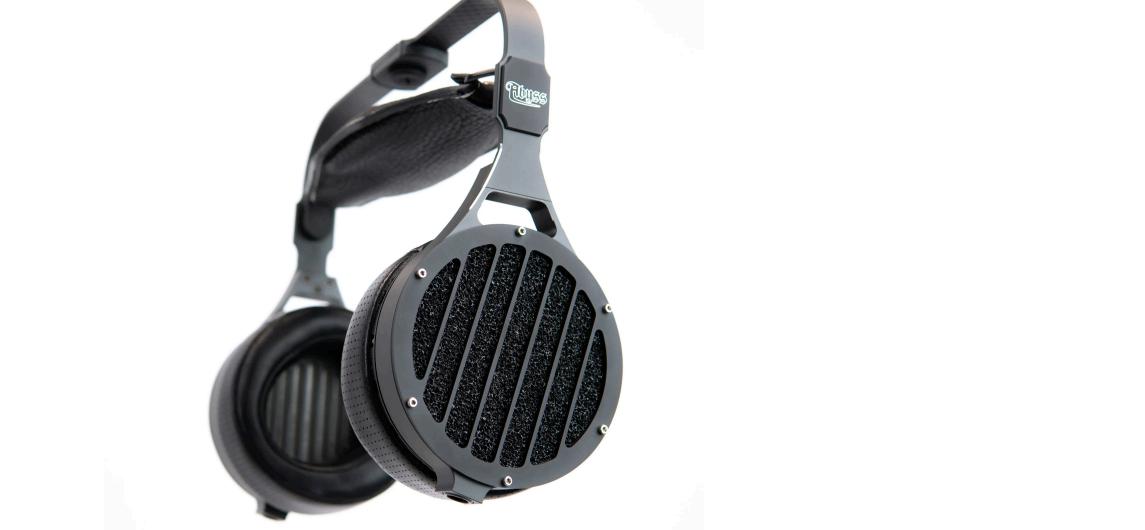

Transparency, resolution and detail seemed like pale descriptors for the STAX X9000 relative to the competition. Not really up to the task when attempting to describe what the STAX X9000 was capable of and how profoundly it “handled things”. The same now holds true for the AB1266 Phi TC as, relative to the competition, it is transcendent in most if not all respects.
the spell is not to be dispelled by any other headphone. That is to say that a palette cleanser will be in order, lest the next headphone should sound closed-in, dark, entirely unimaginative, when, in fact, it isn’t.
And let me state for the record that the five headphones currently in the AKR’s TOP FIVE HEADPHONES list are to a one exceptional! Exceptional in how they weave transparency, resolution, detail and musicality together, seamlessly, song after song after song. The Abyss AB1266 Phi TC, however, is on another level altogether, and this is amazing. I did not expect this level of differentiation, or to put it another way, such a commanding gap in performance between it and all others. But there it is.

Why? Because to complete a listening session with the Abyss AB1266 Phi TC and then to attempt to listen through any other headphone, ANY other headphone, regardless of the upstream components, seems, well, futile. As in, “We are the Borg and ‘your musicloving consciousness’ will be assimilated and undeterred. Resistance is futile.” Or, in this case, you are spellbound, completely captured by the music of the Abyss AB1266 Phi TC, and
Toward the end of last year I proclaimed the STAX SR-X9000, and I paraphrase, the “best electrostatic headphone in the world”. This was owing to the fact that electrostatics or the technology behind them make them, altogether, without peer. That said and as mentioned above, technology has not stood still. The top planar and dynamic headphones have, indeed, bridged the gap. And now the Abyss AB1266 Phi TC makes its presence known and dramatically so.


REFRAIN: Unlike most reviews, this review will be non-sequential, as it will start with how the headphones actually sound and not the process of physically “undressing” them and/or laying out their various parts, specifications, etc. Think of this review then, as a non-linear movie— In the Shadow of the Moon, Kill Bill, Pulp Fiction, The Queen’s Gambit, etc—that, likewise, starts at the end and winds its way to the beginning.
Quiet. Effortless. Pristine. Sublime. Stunning. There are several things that immediately place the Abyss AB1266 Phi TC apart from all headphone contenders and one of those things is its preternatural quiet. The quiet before a band member comes in, before the next pondered word is spoken or sung, during the transition from an interlude, etc. And it, the quiet, begs anticipation and a wanting, like I’ve never quite experienced before. This is just one of the Abyss AB1266 Phi TC’s many talents. The others are its openness and speed, its electrostatic transparency and resolution, its coherency, and its capacious soundstage.
The AB1266 unfolds the music effortlessly and with a pristine, crystal clarity that is neither cold, nor warm, it simply is. And in this sense the music is revealed in all of its glory or lack thereof, should the recording in question be poor. But even the poor recording will be transparently unveiled, revealed like it never has been before. And this is a magic which
escapes all others, save the STAX SR-X9000 headphone.
But therein lies the dichotomy of the AB1266, because it is also sweetly sublime in how it engages both sides of one’s brain—the meticulous, detail hungry, bandwidth fastidious listener and also the lover of tone, timbre, texture, the passionate musicophile who needs simply to be moved. And its ability to render a range of tonal shadings/colors is superb. This the Abyss AB1266 does exceedingly well and one is advised to listen/audition only if the price of admission will not call forth pre-stroke tremors or rapid onset catatonia or worse.
The Abyss AB1266 Phi TC will not, however, suffer the weak, watt-ailed, wannabe, headphone amps that cannot measure up or dance or drive it. Understand, this will not be its failing, but that of the watt-less culprit(s) in question. I was very fortunate to have on hand headphone amps ranging in wattage from 2Watts to 6-Watts and each—Aurorasound
HEADA, LTA Z10e, HeadAmp GS-X Mini, HeadAmp GS-X Mk II—danced and sang beautifully with the Abyss AB1266, across all chosen genres.
I had initially quoted for the STAX SRX9000 review what I had written for the STAX SR-009S review, the once former flagship:
“The SR-009S is as transparent as a summer’s day is long—unrivalled transparency… and without peer.” I subsequently said for the SRX9000, “Scratch that.” The SR-X9000 was by far superior. Well, you’ll need to “scratch that”


again as the Abyss AB1266 Phi TC may well be the separated-at-birth-twin which is on a par with the SR-X9000 electrostatic headphone. It is saying a great deal when a planar headphone can match an electrostatic headphone at its formerly undisputed primary gifts.
The Abyss AB1266 Phi TC soundstage is cavernous, middling, and intimate when called on to be so. The question will, nonetheless, arise, “How deep a soundstage can the AB1266 headphone recreate?” The answer direct from the Abyss AB1266—“Bring on the soundstage and I’ll cover it.” And so it did. Yeah, sounds like hyperbole, right? Well, it isn’t and this was but one of the many mind-boggling talents that this planar headphone, as the synthesis or consilience of electrostatic, dynamic, and planar headphones, was capable of. In truth, I didn’t believe all that had been written and said about the Abyss AB1266 Phi TC. I believe it now. Separation of performers across the stage and at depth—layering—and rock-solid positioning, absolutely phenomenal. I’m sure you can see where this is going.
The Abyss AB1266 Phi TC was paired with the AURORASOUND HEADA HPA (review coming), LTA Z10e integrated/headphone amplifier (award winner), the HeadAmp GS-X Mini HPA (award winner), and the HeadAmp GS-X MK II (review coming). The DACs used were the Mola Mola Tambaqui DAC (award winner), the Bricasti Design M1SE (award winner), and the DENAFRIPS Terminator II DAC (award winner). The streamers were the Aurender N30SA (review coming) and Grimm
Audio MU1 (award winner). An Audience Front Row Cable suite (award winner) and RSX Beyond and Max power cords (reviews coming) were tasked with wire/cable responsibilities. And an Adept Response aR6T4 (review coming) provided the power conditioning/regeneration.
Detailed. Tight. Blistering. Best (as in good, better, best). There was some trepidation, I must admit, to the Aurorasound HEADA driving the Abyss AB1266 with its 2 watts of power. The Abyss at 88db is not at all very efficient and its 50 Ohm impedance requires a good deal of power run across it. So, I began easily, though I had HeadAmps GX-S Mini (4 watts), GS-X Mk II (6 watts) and the LT Z10e (3 watts) to choose from, should things go ‘south’. I began with Dave Holland’s “B-40/M23-6K/ RS-W” (Emerald Tears, ECM) as a first demonstration of dexterity, speed, inner detail, and tonal/timbral shading. In brief, it was an electrostatic rendering—speed, transparency, resolution, copious inner detail—with top to bottom planar weight that rendered tight, fast bass. Marcus Miller’s Power (M2, Concord) then rolled in and most fears were quickly put aside, as the HEADA’s 2 watts ‘got down(!)’ with the Abyss AB1266. Nary a clip was heard all through the night. The true test—Eiji Oue’s V. Infernal Dance of King Kashchey (Stravinsky, Reference Recording) was next up. As it cued, ominously, all senses were alert for the faintest trace of clipping. Yet, powerful and


thunderous was the opening with the massed tympani (7) and, again, nary a trace of clipping. What there was, in fact, was a beautifully rendered movement replete with excitement, repeated sub-bass dives and unperturbed, lightning-fast, dynamic shifts. If it could be so with the HEADA’s 2 watts all others need not fear. And suffice to say, their performances with the Abyss AB1266 were ‘over the moon’ and, in a number of cases, more potent, but none were truly more musical than the HEADA. Repeat.
Repeat. Did I mention the fervid attention to detail retrieval? Yikes!

Detailed. The birds. The birds. Sumptuous beauty. Some touchstones reflect directly on the music of the natural world or, in this case, the birds that sing from a distance outside of the recording studio. Olafur Arnalds’ Árbakkinn (Island Songs, Mercury (Universal France)) opens and again the STAX SR-X9000 is rivaled, with the songs of the birds present from the very beginning, in alignment with poet Einar Georg Einarsson’s recital. And it is a recital with gravitas, texture, and intention, given but a few inches away from you. This—the electrostatic openness, the speed, coherence and transparency—are what betray this planar headphone as something much more than it is, as it provides a ‘you-arethere’ realism and beautifully distinct timbres.
It is an odd thing, but I can only now truly enjoy choral and live music when an electrostatic system has been engaged for its replay/rendering. Prior to my exposure to electrostatics, I was just fine with the aforementioned music, which I very much enjoyed, played across all components and systems. I then discovered that there was so much more to the music, in all respects, via electrostatics! Voces8’s “Agnus Dei” (Lux, Decca) queues and there is anticipation, as this is an incredibly beautiful piece of music. It opens and a familiar voice is set free. It soars skyward far above the cage of ‘electronic/ transducer’ limitations. This portrayal renders a sky-like openness and airiness and limitless height, that, again, grows beyond all previous incarnations. The venue—St. George’s Church,


brings me to the realm of electrostatic reproduction, free of electrostatics, as did the ZMF Atrium, but the Abyss AB1266 Phi TC portrayal is better still. Repeat.
TREBLE+
Detailed. Soaring. Openness. The needle drops, so to speak, on Dave Brubeck’s Take Five (Time Out, Columbia-Legacy) and there is drive and energy, openness and air to Morello’s cymbals, via the HEADA/Abyss combo that makes things so very much alive. The Abyss AB1266 also brings weight and speed and
heretofore. This, in turn, brings, via the Abyss, Eugene Wright’s bass into presence and stark relief as opposed to the distant, bodiless, ghost-like strumming it can often be. Repeat. This—the energy, drive, air, weight—is what one would expect seated at the actual performance. Repeat. It’s that good. After some time spent with Dave and Friends, the Kronos Quartet’s “Aaj Ki Raat”—“Tonight is the Night”—(Kronos Caravan, Nonsuch) is given the nod. And it is as if the stage has expanded in all directions. The various instruments, both exotic—Hindustani tabla, Lebanese nay,



Iranian kemancheh—and the not so exotic— violins, viola, cello, triangle—are given life and weight and speed. And the rendered timbral/ tonal distinctions, shadings, textures, the freed inner details of the various instruments are superb and beyond previous renditions. The STAX SR-X9000 was also very good at this, which sets the two of them distinctly apart from all others. Bravo, bravo!
What happens when transparency is, seemingly, exceeded? Realism? Or, perhaps, seeming realism? This is the conundrum raised by the Abyss AB1266 Phi TC and its easy ability to make the best of the best headphones sound dull and uneventful, while it waxes on clear as a well-made bell or an outstanding opera diva, and as it upends electrostatics. Yikes!
No, I was not prepared for the Abyss AB1266 Phi TC. Why? Ever had a movie built up out of all proportion and it turned out to be, well, supremely disappointing (or horrible!)? First, I didn’t expect the AB1266 to be at all disappointing, but as good as reported? Well, it is that good and even at this price point! It is a herculean effort to let the AB1266 Phi TC go or to even consider doing so.
I think that I’ve said it all. The Abyss AB1266 Phi TC is a phenomenal headphone. It brings an undying passion for musicality and a ferocity for transparency and clarity and detail retrieval, formerly the domain of the best
electrostatic headphones. But this planar headphone speaks that language—electrostatic —fluently and well. Its only current rival is the STAX SR-X9000 electrostatic headphone. That they are both similarly priced is rather telling, in the manner that one gets what one pays for.
That said, I happily award the Abyss AB1266 Phi TC our highest award—the DIAMOND AWARD for incredible technical/musical excellence. No doubt, to be seen again at 2023
Best of the Year.
Pros: Spectacular transparency, resolution, detail, with a refinement and ease and natural musicality that one would think mutually exclusive and, in this case, be unquestionably wrong. A truly breakthrough product!
Cons: Power is the Achilles Heel of the Abyss AB1266 Phi TC. You’ll need plenty of it and it will need to be very good (see Systems). And, well, it’s expensive, very expensive.
ABYSS
ABYSS AB1266 PHHI TC $5999 https://abyss-headphones.com info@Abyss-Headphones.com
AKRM





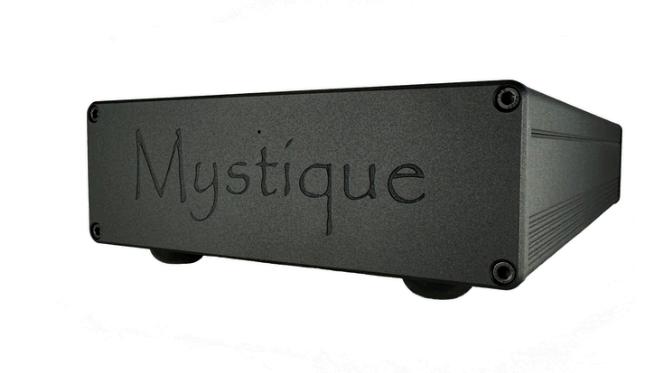
By Oliver Masciarotte

Mojo Audio is one of those companies that focus on performance over superficial appearances. Owner and designer Benjamin Zwickel is one of those small business owners who pours his heart and soul into his products, guided by architect Louis Sullivan’s “form follows function” approach. Sullivan wasn’t one to leave his buildings devoid of ornamentation. Quite
Back in May of last year, I reviewed the enviable Mystique X SE, Zwickel’s take at the time on a premium and full–featured performer. Please refer to that piece for my views on that model, now supplanted by the Mystique X '24, his new top-of-theline. While working on the X ’24 design, he realized that since “…over 80%” of his DAC customers require only a USB input, he could broaden the Mystique range by

surface treatments and eye–pleasing æsthetic choices. Zwickel, on the other hand, seems to hold in contempt the trend of increasingly precious decorative elements seen in other hi–fi manufacturers’ designs. His are stark and, in the case of his Digital–to–Analog Converters (DACs), there is very little to clue in the observer as to what product is actually at hand.
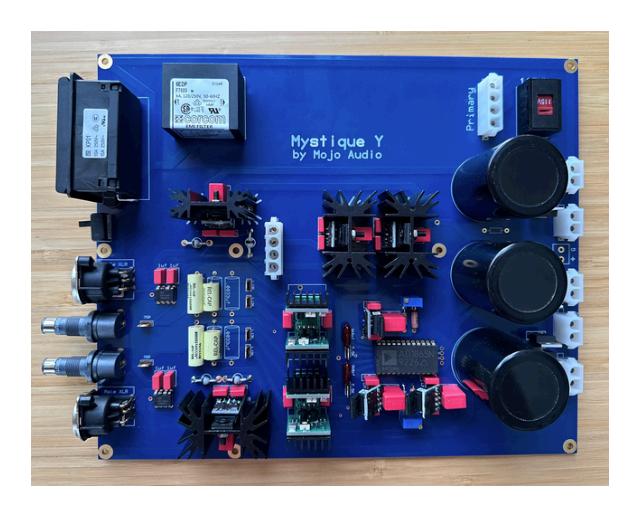
the Mystique Y born…
Gone are the front panel status lights. So too is the “X” engraved on the front fascia. All that remains is the family name, “Mystique.” Even feet are left off, assuming that the customer has their own preferences for vibration control. I chose three of my RA Design Labs ceramic isolation cones, placed asymmetrically. What remains is an unadorned black box,


literally. Te only eye–catching feature of the front panel is, gasp, a dim blue LED indicating power. Internally, extra inputs have been designed out in favour of that most popular of transmission choices, the Universal Serial Bus, once referred to by yours truly as the Unused Serial Bus‡.
“Because the Mystique Y has only one USB input we were able to greatly simplify the digital circuitry,” notes Zwickel’s website. “No need for an input selector, demultiplexer, or S/PDIF receiver. Te AD1865 R-2R DAC chip is directly fed by the USB input module.” Te product description goes on to say that the “… Mystique Y incorporates the same no–compromise ultra-purist non–oversampling (NOS) direct–coupled R-2R circuitry as all previous Mystique DACs.” Banished are phase-scrambling analog pre–filtering, spectrum–skewing digital noise shaping for oversampling, or “questionable” errorcorrecting algorithms.
In all ways, Zwickel strives to make his digital signal paths “…the purest possible.”
Te Mystique Y is available with three choices of Lundahl chokes†. Te base build incorporates a ferrous core. For an additional $1,500, an amorphous core choke is available, and $1,500 more gets you a “nano crystal” version. My review example was decked out with the most advanced option. When asked about the
choice of inductors, Zwickel stresses that “…the chokes are not in the signal path: our signal path is direct-coupled and rather simple when compared to most DACs. Te chokes are in the analog power supplies and regulate the flow of energy. Te finer the crystalline structure in the core of the choke, the more evenly and effortlessly the electrons flow. Te result is better time, tune, and texture, more coherent harmonic structure, more organic character, better musical flow, and more of a sense of emotional content, flesh, and breath.” In case you’re wondering about the perceived distinction each choke makes, Zwickel advises that they contribute “…very subtle sonic differences.”
Around the hind end sits a standard IEC power inlet and a Standard-B type USB receptacle, along with balanced and unbalanced analog outputs. Te power switch is also located on the back of the unit. Getting started is simplicity itself: plug in the I/O and power and off you go. If, however, you are running Windows with its bare bones USB Audio class compliance, you will still need a third-party driver for the USB hardware. With my Mac mini running Amarra Luxe as source, I grabbed my Wireworld Starlight 8 USB cable, hooked everything up, and started listening.
During this time, I was lucky enough to have a stellar little two–way in da house,
the affordable Haydn SE Signature from Vienna Acoustics. I also had my default towers, the MB2.5 B from Scansonic HD. Analog cabling was all balanced Audio Art Cables’ Statement…
Better known for her vocal jazz stylings with drummer Charles Ruggiero and pianist Ehud Asherie, native Alaskan Hilary Gardner’s recent On the Trail with Te Lonesome Pines is a collection of oldskool Americana from the days when Hollywood cowpokes lit up the silver screen. Singer, Capitol Records co–founder, and jazz head Johnny Mercer’s I'm An Old Cowhand (From the Rio Grande) is a favourite of mine that’s been covered many times. From Der Bingle’s goofy, very uptempo and swinging 1936 original to Gardner’s sedate rendering, the modern take still does justice to the OG. Already dark and drenched in reverb and delay, the Mystique Y portrays Gardner’s voice with a super smooth, honeyed tone reminiscent of Mel Tormé’s Velvet Fog. As with seemingly all R-2R NOS DACs, the Mystique Y trades a touch of transient detail for a refined, burnished glow. Hollow state roundness from an all–digital path? Yuppers!
Staying with female vocals but swinging
Queen Mary from Francine Tirteen’s 2017 single release of the same name. In and of itself, the track is a typical studio creation, with ample stereo novelty effects and even more high-frequency content than you can shake a stick at. To make things worse, to my ears it retains a harsh, crunchy Pro Tools fingerprint. When paired with the wrong playback chain, the result is a stultifying and almost painfully pointed midrange accompanied by treble that will tear your head off. Yet when played through my current setup, there was none of that razor sharpness and shouty vocal. Te Mystique Y tamed the excess, er, everything that is that track, and made it actually listenable, if not pleasant.
Always a fan of the late great Al Schmidt, I spun up the album version of the iconic hit power ballad Rosanna from Toto IV [Qobuz Columbia 1982]. A towering creation from all involved, the Grammy Song of the Year is delivered as an exceptional fidelity 192k stream with a big fat artificially engineered soundstage.Te two Steves, Porcaro and Lukather, described it as “the ultimate Toto track,” and I have to agree. It also makes a great singalong! Comparing my reference exaSound e22 Mk. II to the Mystique, the



Mojo Audio piece makes for a compelling rendition, I have to say that the exaSound is strictly more accurate. Why? Te album was recorded at Sunset Sound to 30 ips analog tape with no (Dolby A) noise reduction. I also know which vocal microphone was used for Africa, another single off that album, but not for Rosanna. However, given Schmidt’s preference for large diaphragm condenser microphones, I would guess that a similar pickup was used on Rosanna. Long story short: listening to the two DACs, the e22’s sound more closely aligns with what I would expect, given my thousands of hours “behind the glass” at Criteria and other studios during tracking sessions.
Tat begs the question: is accuracy better? No. Ours is a hobby, not a science. Te fundamental difference in texture that I heard between the two DACs was subtle. It could have been the result of changing out loudspeakers, phono cartridge, or even amplification. Especially with some loudspeakers, I think that less treble, less detail can be a good thing. Some speakers throw an aggressive top end, and could sensibly be surrounded with gear that lessens that tendency. At AXPONA, there was many a room with too much “detail,” to my taste at least. Tat’s the thing… audiophilia is all about your personal tastes as much as anything else. After extended
listening, I came to appreciate the Mystique Y as much as my overtly complex, oversampling reference. Te Mystique Y is simply a different view into the same musical universe.
Enough with the pop! Let’s turn instead to Camerata – Queensland’s Chamber Orchestra and their track Beams and Waves, from this year’s compilation Women of Note Vol. 6 [Qobuz 48k ABC Classic]. Aussie composer Isabella Gerometta was commissioned by the Camerata to fashion a work “…based on the architecture of the Tree of Knowledge memorial in Barcaldine, Queensland,” according to Gerometta. “Beams and Waves explores different visual perspectives of the memorial and renders them as sonic structures with jutting themes and rhythmic grooves.” Te 2018 score itself is marked “With shape and energy:♩=145” and that’s what you get: a galloping modern classical creation filled with the tones of myriad stringed instruments and “free harmonic gliss(es).” Strings, when handled poorly, can be raucous and strident, yet the Mystique Y tames their tart and grating aspect with a subdued and gentle hand.
Ignoring the Taylor Swift first track that plays over the closing credits, Mychael Danna’s Te Fourth Of July from the Where Te Crawdads Sing soundtrack [Qobuz 48k

Decca 2022] is a small but brilliant gem. At just under two minutes, this musical cue unfolds and resolves before you know it. As much as for its overall feeling of delicacy and broad range of timbre and frequencies, I selected it for the subterranean, pitched–down percussive element that appears 44 seconds into the track. Not that the rest of the track is a throwaway—it’s a personal fave, along with Mussels For Jumpin’—but those deep tones get me paying close attention every time. Te exaSound was less able to deliver the impact of those low frequency elements, while the Mystique Y lived up to its mysterious ancestry, gripping the low end and hitting the listener with a velvet hammer. Tat control is less noticeable on other LF test tracks of mine, like Justice’s Generator from this year’s Hyperdrama [Qobuz 96k Genesis]. Its pneumatic, pumping, and hyper–compressed low end is almost steady state in comparison.
Te Mystique Y embodies much of Mojo Audio’s juju, yet at the base level it carries a price that many of us can afford. If USB is what you have and you want to move up from the entry level DAC you started with, the “Y” could just be your man. You can start with the base level and later upgrade for the difference in price. Possessing the traits that make R-2R
DACs so seductive, a warm-blooded cohesiveness of tone and ability to capture the gestalt of human performance, it is powerful and desirable. Te Mystique Y renders all that in spades. If you can, do take a listen.
Mojo Audio Inc Albuquerque NM www.url.com
Mystique Y $3,999 to $6,999; $6,999 as tested
‡ — In the Dark Days of digital audio, the 24-bit AES-EBU serial protocol was the only broadly accepted method of feeding a DAC. Tis was when USB version 1.0 was only capable of supporting the lowest rank of peripherals: mice and keyboards. As usual, Apple Computer and Intel innovated somewhat out of necessity, creating the high-speed FireWire protocol and its isochronous, time–focused data transfer abilities. Over time, FireWire evolved into Tunderbolt, which then went on to become part of the USB 3.0 standard. Tat now ubiquitous USB-C connector, also developed by Apple and Intel, supports up to 20 Gbits per second, and can contain all the functionality of USB 3, plus FireWire, Tunderbolt, PCI Express (PCIe) and DisplayPort, all within that tiny envelope.
† — Technically, chokes are the simplest of inductors, and can have either a core of magnetic material or no core, just a coil of wire. In the latter case, they are referred to as “air core,” a phrase often seen when discussing loudspeaker crossovers. Chokes act as low–pass filters, reducing or eliminating higher frequencies while letting lower frequencies pass through. AKRM






By Andre Marc
Audionet has been making bespoke high performance audio gear for decades, and I have been lucky enough to audition their streamers and amps over the years. I have also heard full Audionet systems at HiFi shows, and always come away impressed. Of course, the German
and using low cost streamers like the Logitech Squeezebox. I used the free Audionet DLNA iPad app to control playback on my devices and it worked flawlessly. They were one of the first HiFi companies to offer a complimentary app that worked with a variety of hardware.
Of course, Audionet’s main business is

manufacturer’s products have always been out of my budget, but they certainly have a loyal customer base that pushes them to innovate.
My first introduction to Audionet was back when I first got involved in networked audio, ripping my CD collection to FLAC,
designing high end “Machines” as they call them, including streamers, DACs, CD players, preamplifiers, integrated and power amps, and phono preamps. Also offered are accessories like power cords, and LAN cables. They also still provide apps on their website, for room correction and music library management.




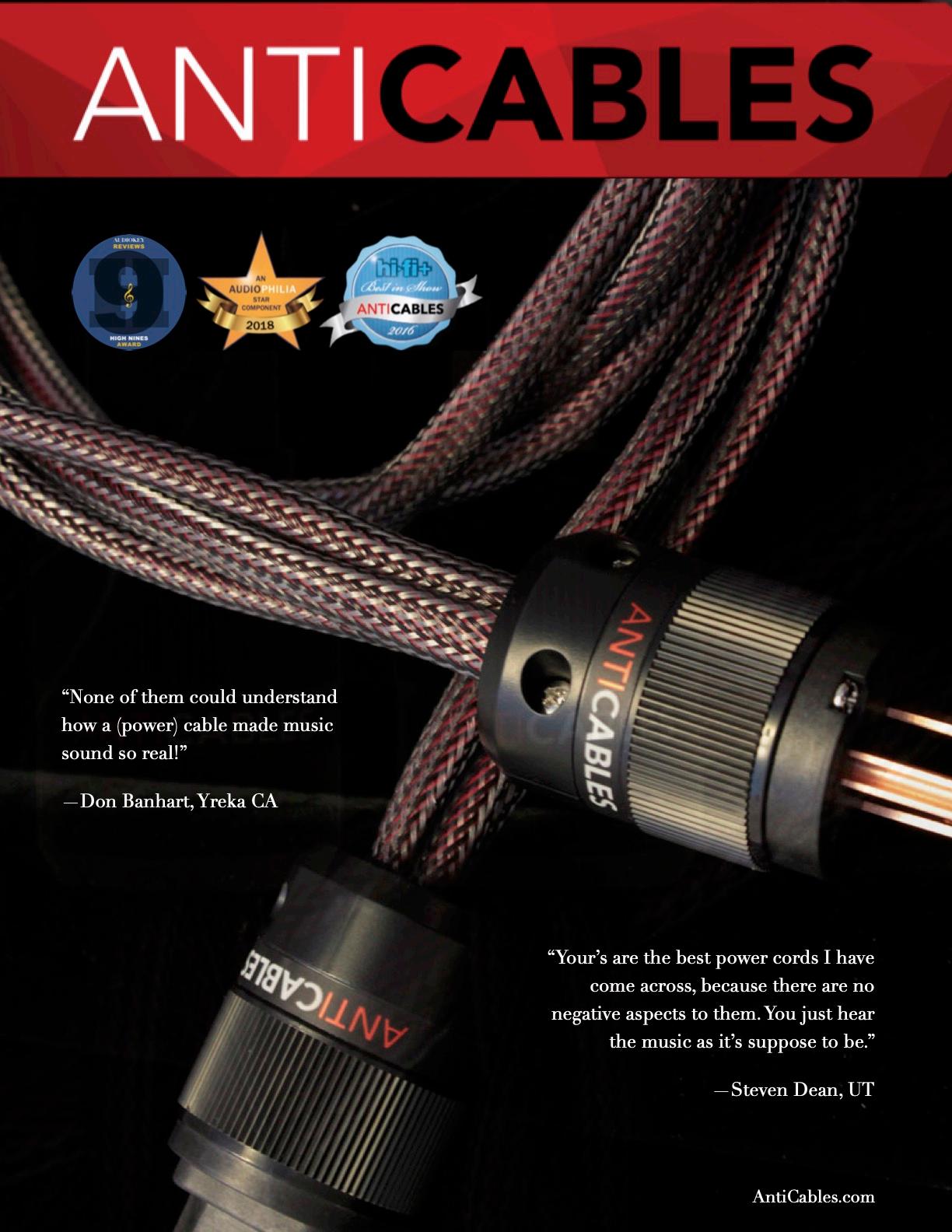
We received Audionet’s WATT integrated amplifier in for evaluation, and it is a beast. It weighs in at 25 Kilograms / 55 Lbs. The basic specifications are 167 watts per channel into 8 ohms, and 284 watts per channel into 4 ohms. There are user programmable balanced and unbalanced inputs, a remote control, and an

optional phono stage board. This uber machine offers over the top build quality and precision workmanship. The volume knob has an immaculately precise feel, with approximately eighty volume steps, and the entire package gives off the vibe of a turbo charged Porsche 911.
The WATT costs $18,000, with an additional cost of $1,000 for the phono
module. Our review sample arrived sans phono stage, so we used our own standalone Rega MC phono preamp. The WATT is definitely a showpiece, and, when in operation, an orange glow emanates from the ventilated top panel. The amp is dual mono in design, and Audionet designs and manufactures most of the components in the WATT themselves.
The Audionet WATT is a backbreaker, the massive power supply and other high grade components contributing to its heft. So, with care, it was installed on a shelf in our rack. We used an Audio Art Cable power cord, and a Symposium Svelte Shelf to maximize


performance. Our sources were a Bryston BDA-3 DAC, a Sonore microRendu streamer, and a Rega Planar 8 turntable. The amp drove Magnepan 1.7i speakers, and signal cabling was a mix of Black Cat and Audio Art. We left the albums during the review period, making sure to sample many different genres and recording vintages. We started out with a bunch of Donovan albums, including Fairytale, A Gift From A Flower to a Garden, and Sunshine Superman, all remastered for CD quite nicely. Donovan’s voice is one of the purest ever recorded during his 60’s heyday, and the WATT presented this purity with amazing finesse. The same applies to the Scottish born troubadour’s guitar style, which was folky yet bluesy as well. It was easy to hear the wood and steel of his guitars, and the timing was impeccable on such tracks as “Hey Gyp” and “Jennifer Juniper”. Through the WATT, all of

SACD acquisitions, Mobile Fidelity’s DSD remasters of the Eagles’ first four albums. We ordered these discs with great anticipation, and they lived up to the billing. They essentially sounded like LPs without surface noise and wow and flutter! Long time favorites like “Take it Easy”, “Desperado”, “One Of These Nights”, and “Already Gone” sounded fresh and vibrant, with the WATT explicitly laying out a wide and smooth soundstage, as




well as little nuances in the mixes that previous digital versions cannot match, at least to our ears.
Switching gears to some wonderful contemporary recordings, we started with the
music, but based on classic British folk rock. Her album, The Edge Of The Land, is enchanting, with spellbinding arrangements. The WATT framed this music so divinely, one could picture a seaside cottage on the English
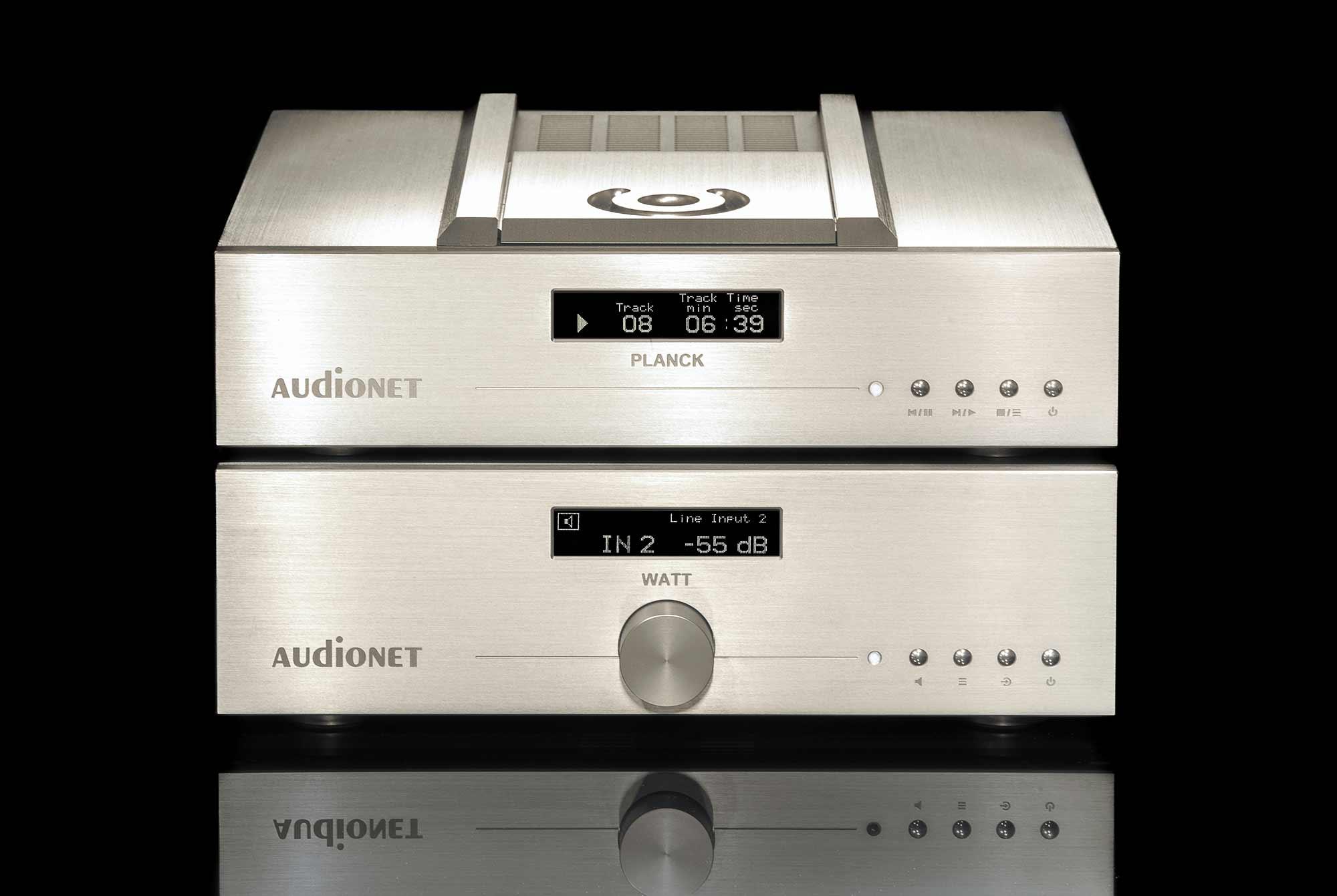
Brendan Eder Ensemble’s Cape Cod Cottage. The 24 bit download sounds terrific, and the music is a spellbinding mix of pastoral jazz and elegant lounge, with eloquent melodicism. The saxophone, flute, and percussive elements had tremendous body via the WATT, and the amp was able to provide an atmosphere very reflective of the album title.
A new artist discovery from Bandcamp, UK based Katie Spencer, also makes pastoral
shore. Her vocals, guitar, and virtually allacoustic instrumentation were finely filigreed, with tasteful touches like flugehorn and Steinway piano being given beautiful body and texture.
Moving on to a stack of vinyl we had on deck, we pulled out original pressings of some of Joni Mitchell’s early albums, including Ladies Of The Canyon, Blue, For The Roses,


and The Hissing Of Summer Lawns. These mint original Reprise pressings were mesmerizing through the WATT, offering the most pleasing and magical balance we have experienced with these albums. Hearing Mitchell sing some of her most iconic songs like “Woodstock”, “River”, “Woman of Heart And Mind” was really thrilling, and it was easy to hear how influential she was on generations of performers to come.
We then got tremendous enjoyment from some of Miles Davis’s late 60’s more abstract recordings, including early Colombia pressings of Nefertiti, MIles In The Sky, and Filles de Kilimanjaro, These albums were
groundbreaking, with Davis tastefully incorporating subtle rock flourishes, while at the same time going into a clear experimental direction. The WATT did a spectacular job of presenting the avant-garde edge of this music, and providing extremely well-defined spacing, as well as correctly rendering the tonality of the soloists.
Comparing the recently reviewed Mola Mola Kula integrated to the Audionet WATT makes perfect sense. However that superb amplifier has been gone for several months, so we can only work from memory. Both amps are in the same price range, but the Kula does
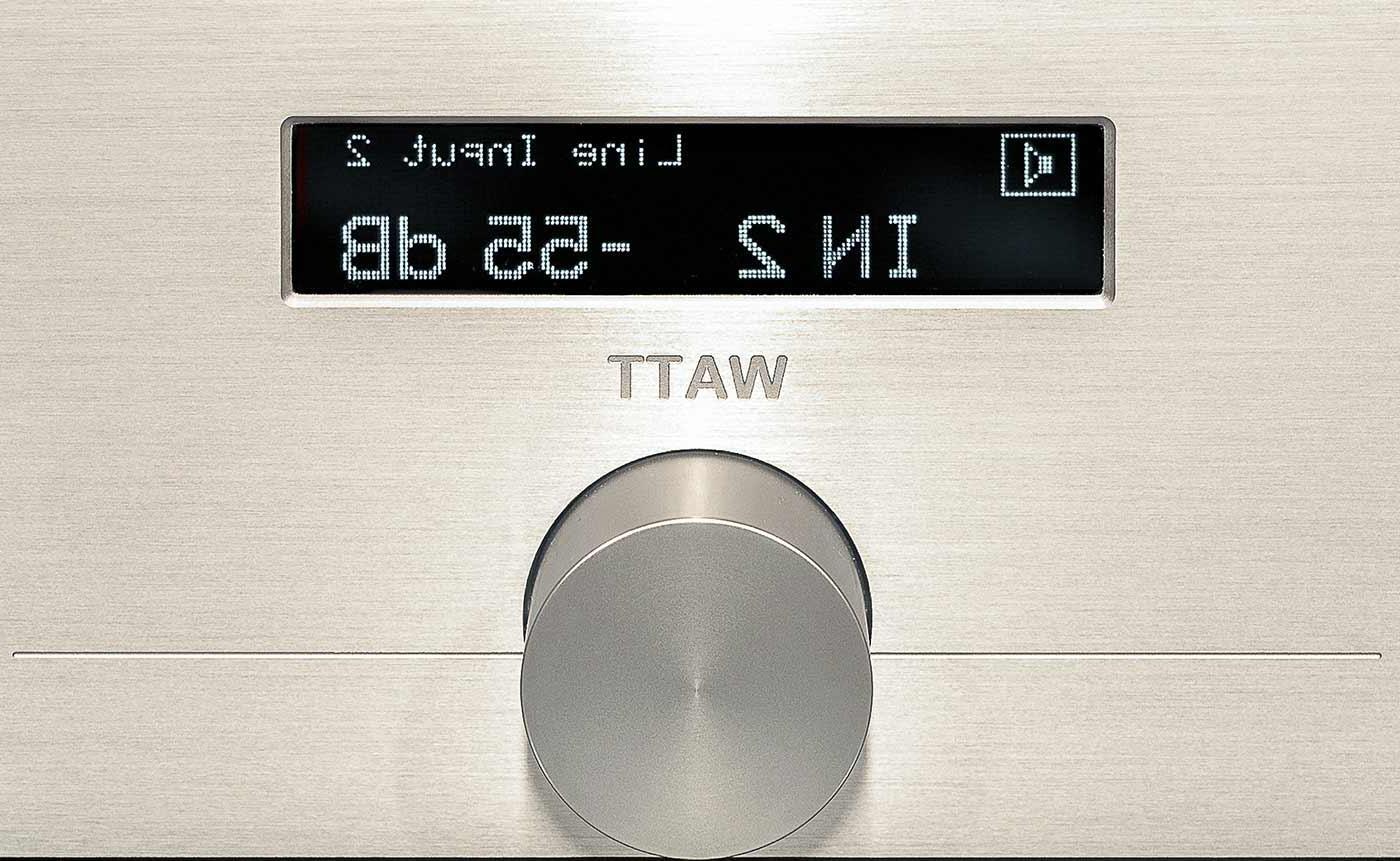




Audionet may have a slightly wider soundstage. But the differences are relatively small, and it would come down in the end to listener choice and feature set.
CONCLUSION:
Quite frankly, the Audionet WATT integrated amplifier is a stunning piece of audio engineering and industrial design. I tried to find flaws in its sonic performance to no avail. I did not get a chance to evaluate the optional phono board, but if it is on par with the amplifier, it is worth the additional grand. The final words we can muster about the Audionet WATT is that it is a gentle giant. It has muscle to spare, but distills its arsenal elegantly, using velvet gloves when needed, and bringing down the hammer when called upon to do so. In other words, it offers power and grace. The Audionet WATT is a true classic.
+ $1000 for optional phono module http://en.audionet.de/
U.S. Distributor GTT Audio
356 Naughright Rd. Long Valley, NJ, 07853 USA gttaudio.com
908.850.3092
AKRM







Welcome to AudioKeyREVIEWS Magazine Canada’s Recommended Components, which will become part and parcel of each of our various issues. The purpose of this section is to acquaint the reader with products—speakers, DACs, amplifiers, preamplifiers, turntables, headphones, IEMs, streamers, portable audio, etc.—that we feel are quite exceptional and rise above their like brethren. There will be three categories—Budget, Mid-Tier, and Top-Of-The-Line. In our Budget Recommendations there will be products that compete far above their respective price point and are, generally, also built to reflect this.Our Mid-Tier Recommendations will encompass those products within arms reach, in terms of relative affordability, that present value and a challenge to the vanguard of their respective product niches. Finally, our TOTL Recommendations will be composed of those products that are at the cutting edge of technological advancement now happening across the world. The three categories of recommendations will rotate across the various issues of our magazine and there will also be a fluidity to the products within the various lists. Things change and especially now given our current technological epoch. The various lists, however, will be fixed on the AudioKeyReviews.com website.





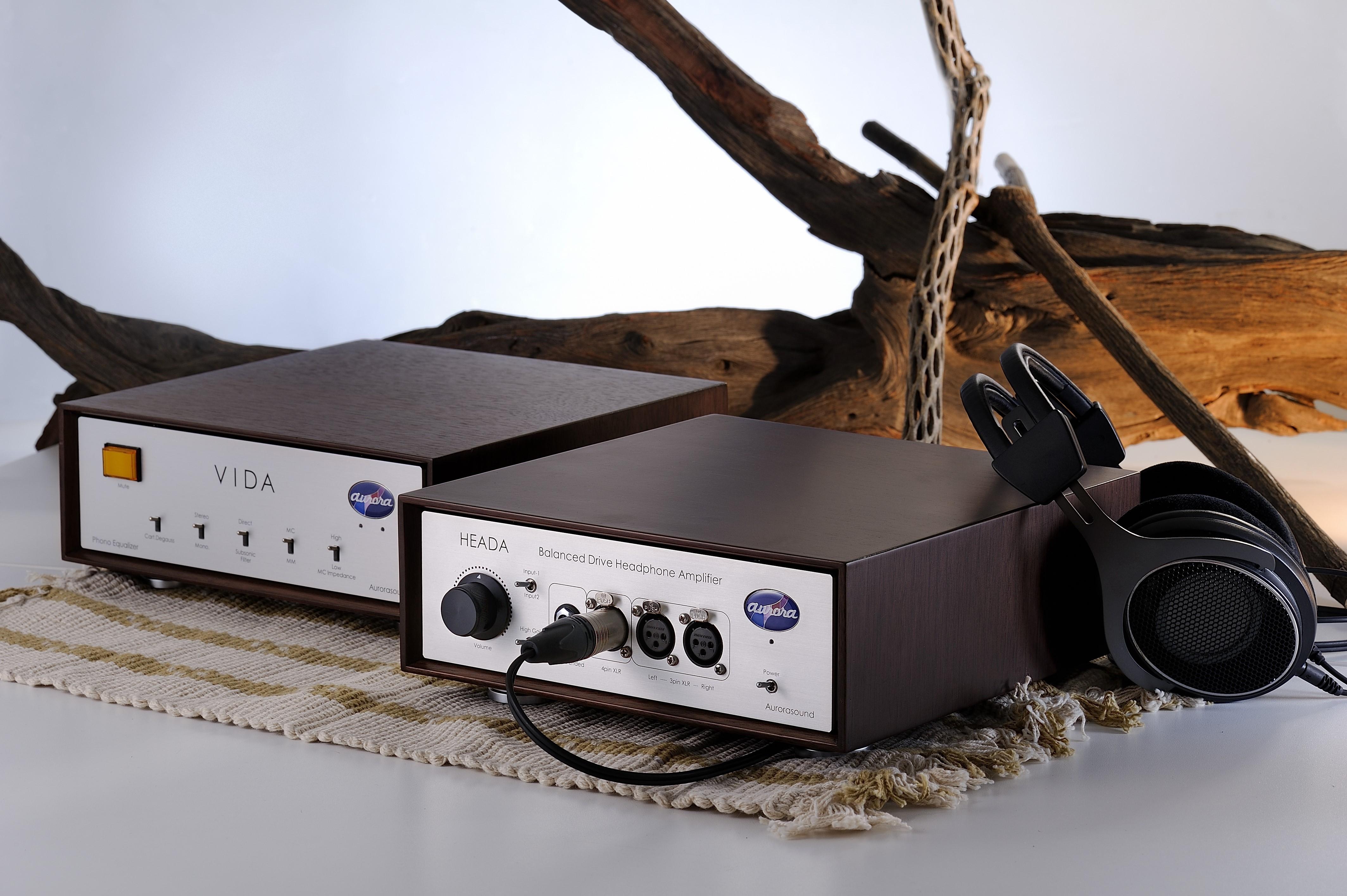

AURORASOUND HEADA
$2999: If you’re looking for an endgame headphone amplifier and even if your headphone amplifier is more expensive, try this one, you may be quite surprised. That said, the Aurorasound HEADA headphone amplifier is a top echelon component and an easy DIAMOND AWARD winner.


SILENT ANGEL RHEIN Z1
$2299: The Rhein Z1 and Forester F2 combo played far above the league that their combined price would indicate. For many, this $3,900 combo may well represent an endgame streamer/ power supply capable of exceptional fidelity with DACs from entry level to those on the cutting edge.
ABYSS AB1266 PHI TC $5999: I think that I’ve said it all. The Abyss AB1266 Phi TC is a phenomenal headphone. It brings an undying passion for musicality and a ferocity for transparency and clarity and detail retrieval, formerly the domain of the best electrostatic headphones. But this planar headphone speaks that language—electrostatic—fluently and well.







TORUS RM20 $3999: Can you say pristine, natural, open, and unhindered frequency response? Wide dynamic range? And there were oceans of detail, air, microdynamics, and ambience rendered by the Torus RM 20. It was not subtle. On the contrary, it was stunning.
RSX POWER8 $399: The RSX Power8 clearly holds to the dictum, “Do no Harm,” to the system in which it is being utilized. What it, in fact, offers is pure, clean power, a testament to the meticulous parts selection, research, and conscious minimalism all employed in its design. suffice to say, that it has no competitors at 3 to 4 times is cost.

GESHELLI LABS ERISH2 [E2] $219.99, JNOG2 [J2] $249.99: Disinterested in ostentation, Geshelli Labs believes in real world pricing with high fidelity performance. Their JNOG2 plus ERISH2 are a petite and potent bargain. With just enough character to put flesh on bone, the classy little twosome sets your music free without excessive color or dispensable features.




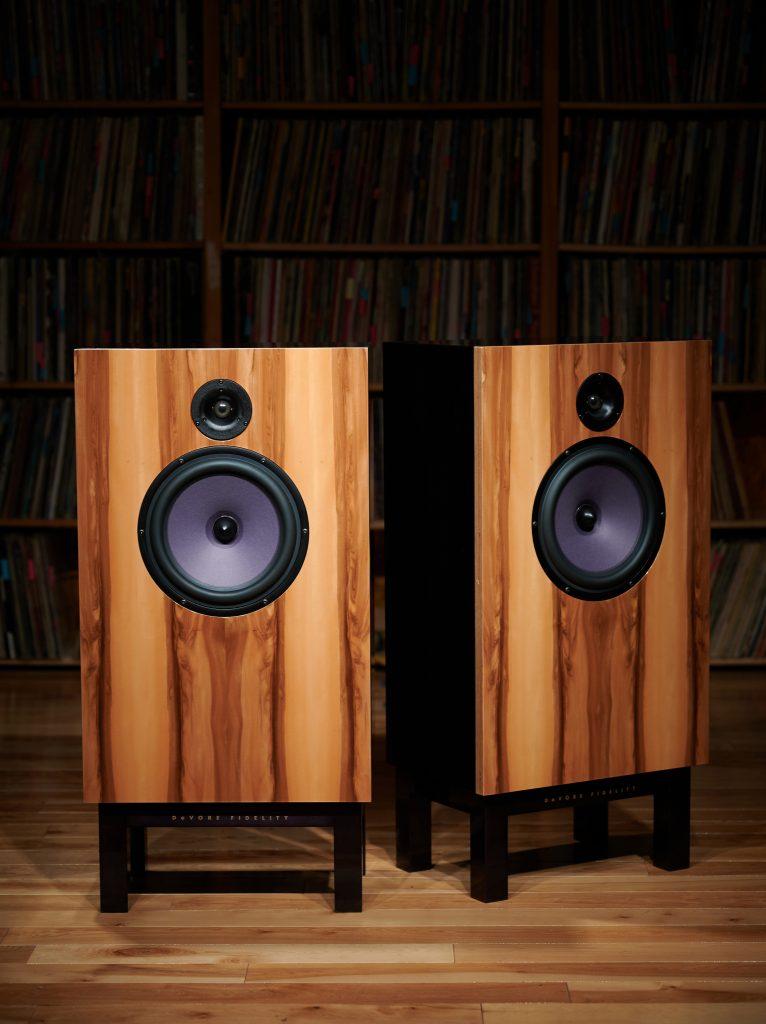



DEVORE AUDIO ORANGUTAN 0/96
DAN CLARK EXPANSE HEADPHONE
ALLNIC AUDIO 300B HEADPHONE AMP
MCINTOSH C8 PREAMP MC830 AMPLIFIERS AND other reviews, columns, interviews, videos, etc.
SEPTEMBER 1, 2024





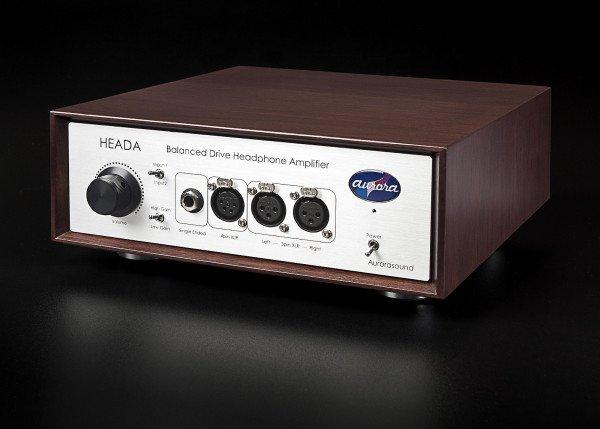
HEADA HEADPHONE AMP





Music is art, art is music.
SALUTE YOU!

ABYSS HEADPHONES
ANTICABLE
AUDIO ART CABLE
AUDIENCE
BAETIS AUDIO
BOENICKE AUDIO
BRICASTI DESIGN
DAN CLARK
GESHELLI AUDIO
GRIMM AUDIO
GTT AUDIO
HEADAMP
HERMAN MILLER
HIGHEND-ELECTRONICS
KUBALA-SOSNA
LEMAY AUDIO
LYRIC AUDIO
MADLY AUDACIOUS CONCEPTS
MAPLE HIFI
MOJO AUDIO
MOLA MOLA
MYTEK
SILENT ANGEL
SONIC ARTISTRY
TORUS POWER
TRI-ART AUDIO
TRI-CELL ENTERPRISES








E LECTRIFIED S TABILIZATION P LATFORM The Last Platform You’ll Ever Need




